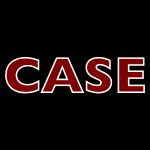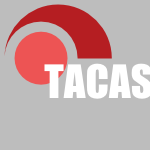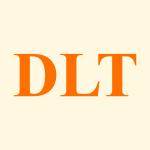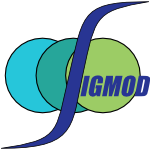41 papers:
 CASE-2015-ZonEHJVSB #detection #multi #realtime #using
CASE-2015-ZonEHJVSB #detection #multi #realtime #using- Real-time collision detection for multiple packaging robots using monotonicity of configuration subspaces (RvZ, DE, DH, IJ, RV, RIS, KB), pp. 1638–1643.
 TACAS-2015-JeanninGKGSZP #hybrid
TACAS-2015-JeanninGKGSZP #hybrid- A Formally Verified Hybrid System for the Next-Generation Airborne Collision Avoidance System (JBJ, KG, YK, RG, AS, EZ, AP), pp. 21–36.
 CASE-2014-AfaghaniA #concurrent #online
CASE-2014-AfaghaniA #concurrent #online- Advanced-collision-map-based on-line collision and deadlock avoidance between two robot manipulators with PTP commands (AYA, YA), pp. 1244–1251.
 TACAS-2014-EssenG #generative
TACAS-2014-EssenG #generative- Analyzing the Next Generation Airborne Collision Avoidance System (CvE, DG), pp. 620–635.
 DLT-2014-GloannecO
DLT-2014-GloannecO- Knight Tiles: Particles and Collisions in the Realm of 4-Way Deterministic Tilings (BLG, NO), pp. 227–238.
 SAC-2014-MotaB #algorithm #anti #internet
SAC-2014-MotaB #algorithm #anti #internet- A dynamic frame slotted ALOHA anti-collision algorithm for the internet of things (RPBM, DMB), pp. 686–691.
 CASE-2013-BjorkenstamGBCL #energy #industrial #performance #using
CASE-2013-BjorkenstamGBCL #energy #industrial #performance #using- Energy efficient and collision free motion of industrial robots using optimal control (SB, DG, RB, JSC, BL), pp. 510–515.
 DHM-SET-2013-AokiTUOIA #design
DHM-SET-2013-AokiTUOIA #design- Human Centered Design of a Pre-collision System (HA, HT, SU, TO, HI, MA), pp. 3–10.
 HIMI-HSM-2013-SuzukiM #fault
HIMI-HSM-2013-SuzukiM #fault- Acceptable System Error of Collision Avoidance System Based on the Integrated Error of Driver and System (KS, MM), pp. 568–576.
 RE-2013-MahauxC #interactive
RE-2013-MahauxC #interactive- Creative collisions: Meet and create: And other “RE interactive” suggestions (MM, DC), pp. 371–372.
 CASE-2012-JungCKM #detection #using
CASE-2012-JungCKM #detection #using- Collision detection using band designed Disturbance Observer (BjJ, HRC, JK, HM), pp. 1080–1085.
 SIGMOD-2012-GanFFN
SIGMOD-2012-GanFFN- Locality-sensitive hashing scheme based on dynamic collision counting (JG, JF, QF, WN), pp. 541–552.
 ICALP-v1-2012-JefferyKM #complexity #graph #matrix #multi #quantum #query #using
ICALP-v1-2012-JefferyKM #complexity #graph #matrix #multi #quantum #query #using- Improving Quantum Query Complexity of Boolean Matrix Multiplication Using Graph Collision (SJ, RK, FM), pp. 522–532.
 HCI-MIIE-2011-CharissisPMA #evaluation #interface #prototype
HCI-MIIE-2011-CharissisPMA #evaluation #interface #prototype- Evaluation of Collision Avoidance Prototype Head-Up Display Interface for Older Drivers (VC, SP, LMM, SA), pp. 367–375.
 CASE-2010-ShoaeiLM #automation #flexibility #generative
CASE-2010-ShoaeiLM #automation #flexibility #generative- Automatic generation of controllers for collision-free flexible manufacturing systems (MRS, BL, SM), pp. 368–373.
 CASE-2010-ZengB #mobile #predict
CASE-2010-ZengB #mobile #predict- Collision avoidance for nonholonomic mobile robots among unpredictable dynamic obstacles including humans (LZ, GMB), pp. 940–947.
 DAC-2010-LiuKLC #bound #concurrent #multi #thread
DAC-2010-LiuKLC #bound #concurrent #multi #thread- Multi-threaded collision-aware global routing with bounded-length maze routing (WHL, WCK, YLL, KYC), pp. 200–205.
 CHI-2010-WangZC #gesture #mobile #named #predict #problem
CHI-2010-WangZC #gesture #mobile #named #predict #problem- SHRIMP: solving collision and out of vocabulary problems in mobile predictive input with motion gesture (JW, SZ, JFC), pp. 15–24.
 SAC-2010-DongD #analysis #probability
SAC-2010-DongD #analysis #probability- Analysis of collision probability in unsaturated situation (QD, WD), pp. 772–777.
 FM-2009-PlatzerC #case study #verification
FM-2009-PlatzerC #case study #verification- Formal Verification of Curved Flight Collision Avoidance Maneuvers: A Case Study (AP, EMC), pp. 547–562.
 DHM-2009-LandryL #assurance
DHM-2009-LandryL #assurance- A Model of Integrated Operator-System Separation Assurance and Collision Avoidance (SJL, AVL), pp. 394–402.
 HIMI-II-2009-DwyerL #assurance #concept #generative
HIMI-II-2009-DwyerL #assurance #concept #generative- Separation Assurance and Collision Avoidance Concepts for the Next Generation Air Transportation System (JPD, SJL), pp. 748–757.
 ICALP-C-2008-ShrimptonS
ICALP-C-2008-ShrimptonS- Building a Collision-Resistant Compression Function from Non-compressing Primitives (TS, MS), pp. 643–654.
 KR-2008-Chetcuti-SperandioL #how #logic #strict
KR-2008-Chetcuti-SperandioL #how #logic #strict- How to Choose Weightings to Avoid Collisions in a Restricted Penalty Logic (NCS, SL), pp. 340–347.
 SAC-2008-RochaR #animation #evaluation #using
SAC-2008-RochaR #animation #evaluation #using- An evaluation of a collision handling system using sphere-trees for plausible rigid body animation (RdSR, MAFR), pp. 1241–1245.
 DHM-2007-Su #detection #performance #precise
DHM-2007-Su #detection #performance #precise- Enhancing Sense of Reality by Efficient and Precise Collision Detection in Virtual Environments (CJS), pp. 969–978.
 DHM-2007-ZhuXYM #detection #novel
DHM-2007-ZhuXYM #detection #novel- A Novel Method for Cloth-Body Collision Detection (XZ, SX, YY, TM), pp. 1056–1063.
 HCI-IPT-2007-ZhouYLLXWCS #specification #visual notation
HCI-IPT-2007-ZhouYLLXWCS #specification #visual notation- Visual and Auditory Information Specifying an Impending Collision of an Approaching Object (LZ, JY, QL, HL, CX, YW, JLC, HjS), pp. 720–729.
 DATE-DF-2006-RaabeHAZ #detection #prototype
DATE-DF-2006-RaabeHAZ #detection #prototype- Space-efficient FPGA-accelerated collision detection for virtual prototyping (AR, SH, JKA, GZ), pp. 206–211.
 ICALP-v2-2006-LyubashevskyM
ICALP-v2-2006-LyubashevskyM- Generalized Compact Knapsacks Are Collision Resistant (VL, DM), pp. 144–155.
 CASE-2005-WangLWK #architecture #distributed #simulation #using
CASE-2005-WangLWK #architecture #distributed #simulation #using- Collision resolution simulation for distributed control architectures using LonWorks (MW, EL, EW, MK), pp. 319–326.
 DATE-2005-RaabeBAZ #architecture #detection #hardware #simulation
DATE-2005-RaabeBAZ #architecture #detection #hardware #simulation- Hardware Accelerated Collision Detection — An Architecture and Simulation Results (AR, BB, JKA, GZ), pp. 130–135.
 CHI-2004-LeeHH #design
CHI-2004-LeeHH #design- Collision warning design to mitigate driver distraction (JDL, JDH, EH), pp. 65–72.
 AGTIVE-2003-Klempien-HinrichsMT #3d
AGTIVE-2003-Klempien-HinrichsMT #3d- Collage Grammars for Collision-Free Growing of Objects in 3D Scenes (RKH, TM, CvT), pp. 383–397.
 STOC-2002-Aaronson #bound #problem #quantum
STOC-2002-Aaronson #bound #problem #quantum- Quantum lower bound for the collision problem (SA), pp. 635–642.
 ECOOP-1997-Mezini #evolution
ECOOP-1997-Mezini #evolution- Dynamic Object Evolution without Name Collisions (MM), pp. 190–219.
 ICPR-1996-LiuHHC #image #visual notation
ICPR-1996-LiuHHC #image #visual notation- Image gradient evolution-a visual cue for collision avoidance (HL, THH, MH, RC), pp. 446–450.
 CAV-1996-BengtssonGKLLPY #protocol #using #verification
CAV-1996-BengtssonGKLLPY #protocol #using #verification- Verification of an Audio Protocol with Bus Collision Using UPPAAL (JB, WODG, KJK, KGL, FL, PP, WY), pp. 244–256.
 ICML-1995-Pomerleau #learning
ICML-1995-Pomerleau #learning- Learning for Automotive Collision Avoidance and Autonomous Control (DP), p. 589.
 ICALP-1992-Schmid #algorithm #multi
ICALP-1992-Schmid #algorithm #multi- The Average CRI-Length of a Tree Collision Resolution Algorithm in Presence of Multiplicity-Dependent Capture Effects (US), pp. 223–234.
 ECOOP-1988-Knudsen #classification #multi
ECOOP-1988-Knudsen #classification #multi- Name Collision in Multiple Classification Hierarchies (JLK), pp. 93–109.
 CASE-2015-ZonEHJVSB #detection #multi #realtime #using
CASE-2015-ZonEHJVSB #detection #multi #realtime #using TACAS-2015-JeanninGKGSZP #hybrid
TACAS-2015-JeanninGKGSZP #hybrid CASE-2014-AfaghaniA #concurrent #online
CASE-2014-AfaghaniA #concurrent #online TACAS-2014-EssenG #generative
TACAS-2014-EssenG #generative DLT-2014-GloannecO
DLT-2014-GloannecO SAC-2014-MotaB #algorithm #anti #internet
SAC-2014-MotaB #algorithm #anti #internet CASE-2013-BjorkenstamGBCL #energy #industrial #performance #using
CASE-2013-BjorkenstamGBCL #energy #industrial #performance #using DHM-SET-2013-AokiTUOIA #design
DHM-SET-2013-AokiTUOIA #design HIMI-HSM-2013-SuzukiM #fault
HIMI-HSM-2013-SuzukiM #fault RE-2013-MahauxC #interactive
RE-2013-MahauxC #interactive CASE-2012-JungCKM #detection #using
CASE-2012-JungCKM #detection #using SIGMOD-2012-GanFFN
SIGMOD-2012-GanFFN ICALP-v1-2012-JefferyKM #complexity #graph #matrix #multi #quantum #query #using
ICALP-v1-2012-JefferyKM #complexity #graph #matrix #multi #quantum #query #using HCI-MIIE-2011-CharissisPMA #evaluation #interface #prototype
HCI-MIIE-2011-CharissisPMA #evaluation #interface #prototype CASE-2010-ShoaeiLM #automation #flexibility #generative
CASE-2010-ShoaeiLM #automation #flexibility #generative CASE-2010-ZengB #mobile #predict
CASE-2010-ZengB #mobile #predict DAC-2010-LiuKLC #bound #concurrent #multi #thread
DAC-2010-LiuKLC #bound #concurrent #multi #thread CHI-2010-WangZC #gesture #mobile #named #predict #problem
CHI-2010-WangZC #gesture #mobile #named #predict #problem SAC-2010-DongD #analysis #probability
SAC-2010-DongD #analysis #probability FM-2009-PlatzerC #case study #verification
FM-2009-PlatzerC #case study #verification DHM-2009-LandryL #assurance
DHM-2009-LandryL #assurance HIMI-II-2009-DwyerL #assurance #concept #generative
HIMI-II-2009-DwyerL #assurance #concept #generative ICALP-C-2008-ShrimptonS
ICALP-C-2008-ShrimptonS KR-2008-Chetcuti-SperandioL #how #logic #strict
KR-2008-Chetcuti-SperandioL #how #logic #strict SAC-2008-RochaR #animation #evaluation #using
SAC-2008-RochaR #animation #evaluation #using DHM-2007-Su #detection #performance #precise
DHM-2007-Su #detection #performance #precise DHM-2007-ZhuXYM #detection #novel
DHM-2007-ZhuXYM #detection #novel HCI-IPT-2007-ZhouYLLXWCS #specification #visual notation
HCI-IPT-2007-ZhouYLLXWCS #specification #visual notation DATE-DF-2006-RaabeHAZ #detection #prototype
DATE-DF-2006-RaabeHAZ #detection #prototype ICALP-v2-2006-LyubashevskyM
ICALP-v2-2006-LyubashevskyM CASE-2005-WangLWK #architecture #distributed #simulation #using
CASE-2005-WangLWK #architecture #distributed #simulation #using DATE-2005-RaabeBAZ #architecture #detection #hardware #simulation
DATE-2005-RaabeBAZ #architecture #detection #hardware #simulation CHI-2004-LeeHH #design
CHI-2004-LeeHH #design AGTIVE-2003-Klempien-HinrichsMT #3d
AGTIVE-2003-Klempien-HinrichsMT #3d STOC-2002-Aaronson #bound #problem #quantum
STOC-2002-Aaronson #bound #problem #quantum ECOOP-1997-Mezini #evolution
ECOOP-1997-Mezini #evolution ICPR-1996-LiuHHC #image #visual notation
ICPR-1996-LiuHHC #image #visual notation CAV-1996-BengtssonGKLLPY #protocol #using #verification
CAV-1996-BengtssonGKLLPY #protocol #using #verification ICML-1995-Pomerleau #learning
ICML-1995-Pomerleau #learning ICALP-1992-Schmid #algorithm #multi
ICALP-1992-Schmid #algorithm #multi ECOOP-1988-Knudsen #classification #multi
ECOOP-1988-Knudsen #classification #multi









